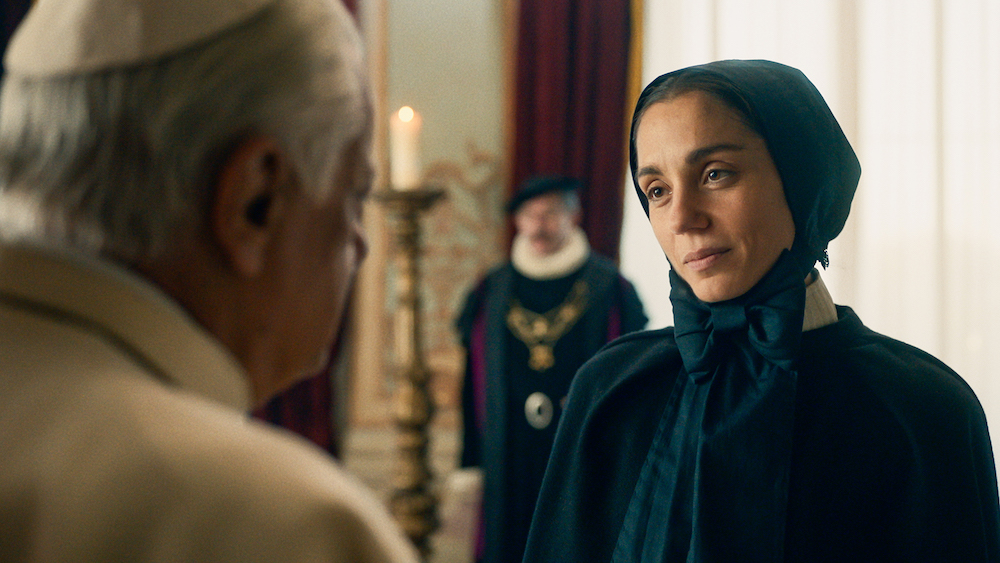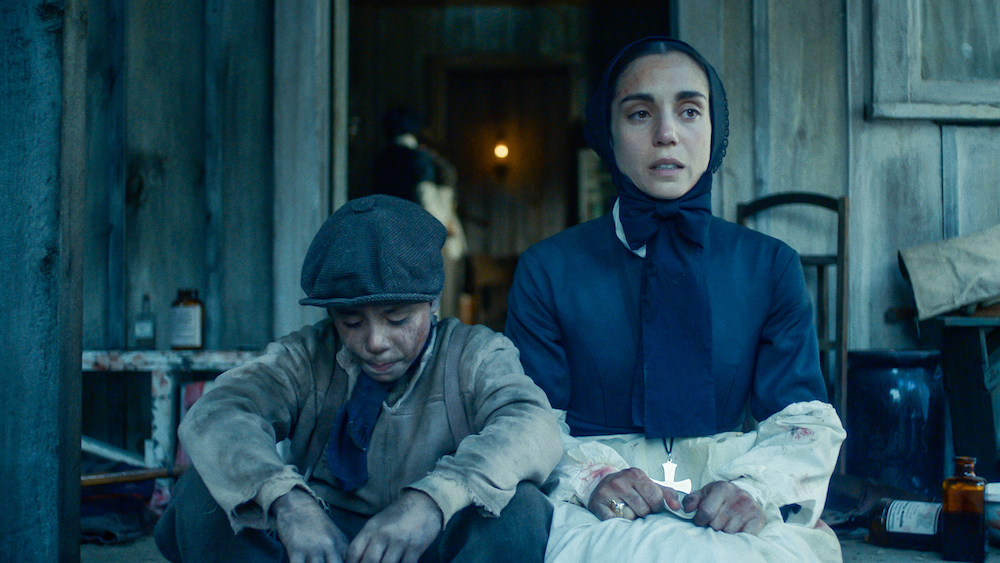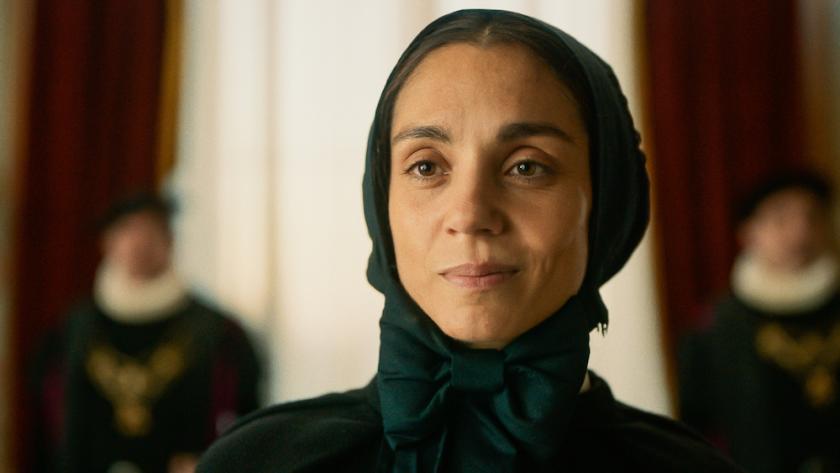“Begin the mission and the funds will come,” says feisty, tubercular nun Francesca Cabrini (Christiana Dell’Anna; Patrizia in Gomorrah) to Pope Leo XIII (Giancarlo Giannini) in 1889. She specialises in defying expectations, especially when men tell her she should stay where she belongs. She became the first American saint, canonised in 1946.
Directed by Christian conservative Alejandro Monteverde, whose Q-Anon-approved movie Sound of Freedom about child sex-trafficking was, disquietingly, a controversial hit last year, this biopic is overlong, sanitised and sepia-toned, awash with angelic beams of light and celestial choirs. You long for a bit of Gangs of New York-style grit.
There’s no denying, however, that Mother Cabrini’s story is inspiring. She was a remarkably determined woman and Dell’Anna plays her with restraint and conviction. Three orders have turned her down due to her weak constitution – she almost drowned as a child and her lungs have never recovered. Recurring flashbacks – too many of them – show her underwater in a floaty white dress. No other details about her childhood emerge.
Undeterred by frailty, she’s set on moving beyond her native Lombardy to start a global mission – an “empire of hope” – founding schools, orphanages and hospitals all over the world, starting in China and expanding eastwards to Afghanistan and Persia. “Is it because I’m a woman that I should limit my scope?” she asks the Pope boldly (pictured below). He ends up on her side, more or less. Go west instead, His Holiness tells her, showing her a box of letters from destitute Italian immigrants in New York. People thought the streets of New York were paved with gold, he explains, but instead they’re paved with abandoned children. So Cabrini and a group of five sisters set sail for the land of the free. “We must first conquer New York,” she proclaims, “and from now on we speak only in English.” And lo, just like that, they do, with Cabrini sounding remarkably fluent right away.
Go west instead, His Holiness tells her, showing her a box of letters from destitute Italian immigrants in New York. People thought the streets of New York were paved with gold, he explains, but instead they’re paved with abandoned children. So Cabrini and a group of five sisters set sail for the land of the free. “We must first conquer New York,” she proclaims, “and from now on we speak only in English.” And lo, just like that, they do, with Cabrini sounding remarkably fluent right away.
They take on an orphanage, with considerable opposition from Archbishop Corrigan (David Morse), in a rat-infested building in Five Points – where Gangs of New York was also set – in lower Manhattan, now part of Chinatown. Policemen dare not set foot. Ragged, starving children run wild.
A child, whose mother lies dying in a wheelbarrow, is turned away by a hospital and told to find one that takes Italians. Cabrini is greeted with racist slurs such as dago and guinea pig. She’s unfazed. Doctors have given her a prognosis of five years. Of course she lives far longer. But we never discover much about her previous life or her character apart from her ability to battle on. She lures the street kids in with promises of rigatoni and crostata for supper. In no time, little girls and boys are washed and spruced up in white blouses and buttoned waistcoats. Paolo (Federico Ielapi, pictured above), whose mother died of typhus in the wheelbarrow, is brought on board with his older friend Enzo (Liam Campora), on the brink of a career as mafia gangsters. Paolo does bring a gun with him, however - the same one his father used to kill himself - and shoots a pimp with it while protecting ex-prostitute Vittoria (Romana Maggiora Vergano), who’s also thrown in her lot with the sisterhood. “We have something in common,” Cabrini tells Vittoria lovingly. “We’re both survivors.”
She lures the street kids in with promises of rigatoni and crostata for supper. In no time, little girls and boys are washed and spruced up in white blouses and buttoned waistcoats. Paolo (Federico Ielapi, pictured above), whose mother died of typhus in the wheelbarrow, is brought on board with his older friend Enzo (Liam Campora), on the brink of a career as mafia gangsters. Paolo does bring a gun with him, however - the same one his father used to kill himself - and shoots a pimp with it while protecting ex-prostitute Vittoria (Romana Maggiora Vergano), who’s also thrown in her lot with the sisterhood. “We have something in common,” Cabrini tells Vittoria lovingly. “We’re both survivors.”
Cabrini also clashes with the viciously xenophobic mayor (John Lithgow). Corruption and vested interests are, as ever, the name of the game. But she finds an ally in a kindly Irish doctor and in Theodore Calloway, a New York Times reporter (Jeremy Bobb). With unlikely ease, she goes to his office and forces him to visit Five Points, inspiring him to write a rousing piece about New York’s shining streets being built upon the bedrock of immigrant bone. “Do we not owe these children – our children – a life better than a rat’s?” he writes. Donations pour in, enough for Cabrini to expand her empire to a building on the Upper West Side. There goes the neighbourhood. But not for long. The mayor sees to that.
Eventually, after they’re evicted, Archibishop Corrigan, who’s starting to see the light, comes up with a better plan: a large property upstate owned by the Jesuits, 15 acres with views of the Hudson, where the children can play in the fresh air. Just one catch: there’s no water, which is why the Jesuits want to sell. But where there’s a will, there’s a way. God's way. The orphanage flourishes, Cabrini’s empire expands, with institutions all run by women. And as she strides into the Italian senate to demand funds for building one of her hospitals, her achievements and bravery do seem almost miraculous.















Add comment